U.S. Army Puts a LID on Drone Threats
Raytheon's KuRFS radars and Coyote effectors team up to defeat evolving, proliferating unmanned aircraft system threats.
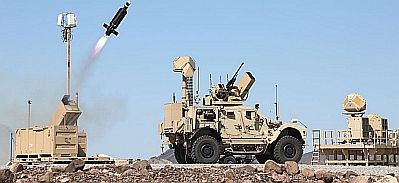
In 2023, the Army award a contract for a quantity of fixed site and mobile LIDS systems to further support the Army's Central Command operations. A third contract followed to equip a third Army division.
The U.S. Army's KuRFS radar and Coyote® effector deliver essential detect and defeat capabilities in the defense against unmanned aircraft systems, or UAS, also known as drones.
That's why these proven Raytheon capabilities are crucial components of the U.S. Army's integrated counter-UAS solution. It's called LIDS: the Low, slow, small, unmanned aircraft Integrated Defeat System.
In October 2022, Raytheon was awarded a contract to initially equip two Army divisions with its Ku-band Radio Frequency Sensor for 360-degree threat detection and Coyote® for low-cost, highly effective UAS defeat.
In 2023, an additional quantity of fixed site and mobile LIDS systems was awarded to further support the Army's Central Command operations. A third contract followed, intended to equip a third Army division.
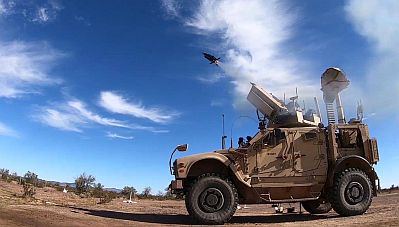
In 2022, the Army awarded Raytheon a contract to equip two Army divisions with Raytheon's Ku-band Radio Frequency Sensor for 360-degree threat detection and Coyote® for low-cost, highly-effective UAS defeat.
In LIDS, the Army integrates Raytheon's KuRFS and Coyote with Northrop Grumman's Forward Area Air Defense Command and Control system, or FAADC2, and the electronic warfare system made by Syracuse Research Corporation for the integrated LIDS counter-UAS solution.
LIDS is deployable as either mobile or fixed, relocatable platforms. The system can provide both stationary support for an installation, asset or site, and a transportable configuration for deployment flexibility.
Layered Defense
It takes "a system of systems approach...to counter the growing threat from unmanned systems," said Maj. Gen. Sean Gainey at the Association of the U.S. Army's Annual Meeting and Exposition in October 2022.
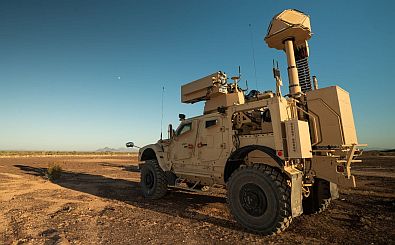
In 2020, the LIDS program began operation in the Army's CENTCOM area, which stretches from Northeast Africa across the Middle East to Central and South Asia.
Gainey, then director of the Army's Joint Counter-small Unmanned Aircraft Systems Office, stressed "there's not just one system that's going to solve this problem -- from small quadcopters all the way up to almost cruise missile-type attack systems that you see out there." So, to defeat this range of Group 1-3 UAS, Gainey added, "it takes a layered approach...it's a solvable problem."
"There are other kinds of counter-UAS configurations, but LIDS is the most robust in everything from detect, track, identify and defeat," said Bill Darnè, Raytheon's Requirements and Capabilities director for counter-UAS capabilities. "That's the advantage Coyote and KuRFS bring to the LIDS configuration," he added. "It's been rigorously tested, deployed in theater and getting the job done."
These capabilities now address a critical gap, Darnè said, which existed when he was serving in the Army in the Middle East: "During my time in Iraq, we had a significant number of false warns that had bad, unintended consequences for our mission. Now, the accuracy of the KuRFS radar and its ability to discriminate between real threats and clutter or biological objects gives us a huge advantage over what we had in the past."
Testing for Success
The proof of excellence is in how KuRFS and Coyote perform as key components of LIDS: "There have been thousands and thousands of hours of evaluations, including quarterly engineering tests, leading up to the Army's annual record tests," said Darnè, a retired U.S. Army colonel. "We've co-developed these capabilities with the Army, and they know that what they have will perform reliably as the mission requires."
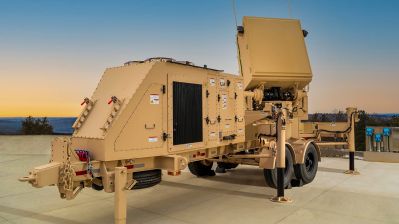
In partnership with the U.S. Army, Raytheon made KuRFS in 2012 as a sense-and-warn radar to detect and track rocket, artillery and mortar attacks in the wars in Afghanistan and Iraq.
Building on the milestones achieved in previous, annual tests, Raytheon's Counter-UAS team members again gathered alongside Army personnel at the Yuma Proving Ground in Arizona for their summer 2023 test.
Again, the results were outstanding:
- KuRFS excelled in a stress test successfully detecting and tracking a complex swarm of more than 30 unmanned aircraft vehicles.
- Coyote defeated several targets, singles and swarms, demonstrating reduced engagement timelines to defeat multiple threats.
- The tests validated the recent hardware and software enhancements made to both systems, to optimize capability and performance.
"There's so much history here," said Abel Ghanooni, senior director of Raytheon's SHORAD and Rapid Development programs. "Coming out of these record tests, we always learn something, and that spurs ideas for improvements to be incorporated ahead of the next one," he added.
Evolving Ahead of Threats
This cycle of ongoing assessments, together with direct input from warfighters operating the systems, leads to improving, upgrading and maturing the technology because "we want to continually evolve the systems to stay ahead of the UAS threat set," Ghanooni said.
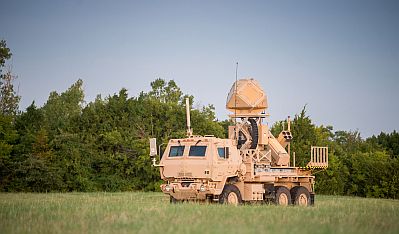
In 2017, the Army deployed KuRFS for short-range air defense, and it has since become the Army's go-to radar for countering unmanned aircraft systems, or UAS.
The consistently successful performance of Coyote and KuRFS during these tests proves that LIDS gives warfighters around the globe a competitive advantage.
"There's significant international interest in LIDS, with more than a dozen countries reaching out for briefings," Ghanooni said, noting that the U.S. State Department recently approved a potential sale of the counter-UAS system with KuRFS and Coyote to Qatar.
Meanwhile, the Army is expected to conduct its next record test in Arizona later this year -- yet another opportunity to demonstrate LIDS' exceptional capabilities and performance.
"LIDS is an operationally deployed system today," Darnè said. "KuRFS and Coyote are out there -- defending soldiers, bases and assets from enemy drones."
Want more information? Click below.
Rate this article
View our terms of use and privacy policy ::m::